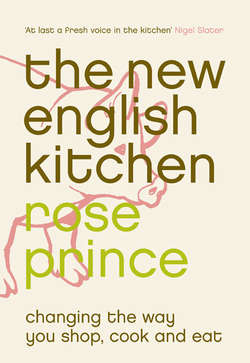Читать книгу The New English Kitchen: Changing the Way You Shop, Cook and Eat - Rose Prince - Страница 26
sourdough bread
ОглавлениеSourdough bread is a treat to buy from a specialist baker and can be eaten fresh or used in recipes. I admit I often beg mine from my sister and brother-in-law, Sam and Sam Clark. With apologies to the late M. Poîlaine, creator of the famous sourdough loaf, pain Poîlaine (see the Shopping Guide), and, honestly, no sibling conspiracy, I believe their experiments at their restaurant, Moro, have resulted in the absolute best there is. A recipe for it is given in Moro – The Cookbook (Ebury, 2001).
Slow fermentation of the yeast in bread makes a sour dough. You can make your own yeast, beginning with a combination of flour and fruit juice and ‘feeding’ the bacteria, but there are simpler methods for home kitchens. Leaving the dough to rise overnight in the fridge, rather than giving it a quick rise in a warm place, produces a more sour dough. You can also knead into it a piece of dough left over from breadmaking a few days earlier (keep it in the fridge, wrapped in cling film; it will sour as it matures). When you make your bread, use only half the yeast specified in the recipe and work the older dough into the new. Allow your dough to rise in the fridge either overnight or during the day. Once baked, the bread will have a full, ripe, savoury taste and the scent of toasted nuts. It will have a strong, tactile crumb, and larger bubbles even if you have used fat. There is no doubt at all that the inner crumb of sourdough keeps its elasticity longer. Nor will the flavour diminish as it ages: old sourdough bread will be as good eaten fresh as it is in your cooking.
